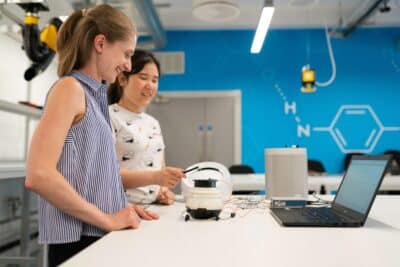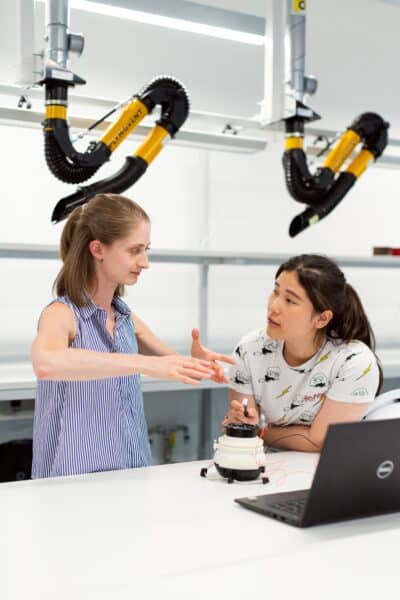Technology integration into education has transformed the learning landscape, offering new and innovative ways to engage students, enhance learning experiences, and facilitate effective teaching methods.
As we progress into the digital era, educational institutions continuously explore creative ways to integrate technology into their curricula. This article examines three innovative approaches shaping technology integration in education, making learning more dynamic, interactive, and accessible.
IMAGE: UNSPLASH
Gamification Of Learning
One of the most exciting and effective approaches to integrating technology in education is through gamification. Gamification involves using game design elements in non-game contexts to make learning activities more engaging and enjoyable.
That said, if you don’t find learning enjoyable even with gamification practices, go to https://writinguniverse.com/ – an online writing service where you can order custom essays.
Speaking of gamification, it taps into the natural human tendency for competition and achievement, using elements like points, levels, challenges, and rewards to motivate and engage students.
Educational games can teach various subjects, from mathematics and science to language arts and social studies. They promote active learning, problem-solving, and critical thinking, making complex concepts more digestible and fun.
Students are encouraged to participate and excel by incorporating leaderboards and achievement badges. Gamification also provides instant feedback, helping students understand their progress and areas for improvement.
This approach is particularly effective in catering to different learning styles and keeping students, especially younger ones, focused and motivated. Learners need to be able to concentrate to deliver quality essays. There are different types of essays that students can write, and you can get free samples to guide your writing process online.
Blended Learning Environments
Blended learning is another innovative approach that combines traditional classroom methods with online learning activities. This hybrid model leverages the benefits of both face-to-face instruction and digital learning tools to create a more flexible and personalized learning experience.
In a blended learning environment, students might attend in-person lectures but complete interactive assignments or discussions online. This method encourages students to actively participate in their learning, with technology providing additional resources and support.
Blended learning can extend education beyond the classroom, allowing students to access materials and collaborate with peers at any time and place. It also enables teachers to use various multimedia resources, such as videos, podcasts, interactive simulations, and translation technology, to enrich their teaching and accommodate diverse learning needs.
By the way, you can see here top trends in translation technology development. With the flexibility and accessibility it offers, blended learning is especially relevant in today’s fast-paced, technology-driven world.
Utilizing Big Data And Learning Analytics
Using big data and learning analytics is a cutting-edge approach to integrating technology into education. Big data refers to the vast amount of data generated by digital tools used in educational settings.
Learning analytics involves analyzing this data to understand and improve learning and teaching. This approach can provide valuable insights into student learning patterns, engagement levels, and performance.
Educators can use this information to tailor their teaching methods to the needs of individual students, identify at-risk students, and provide targeted interventions. Moreover, learning analytics can help in curriculum development, ensuring the educational content is relevant and effective.
This data-driven approach enables a more personalized and adaptive learning experience, maximizing student engagement and outcomes. As educational technology continues to evolve, the potential of big data and learning analytics in transforming education is immense.
Innovative Technology – Conclusion
Integrating technology into the educational process is not just about keeping up with digital trends; it’s about redefining how we teach and learn. Education can become more engaging, personalized, and effective through innovative approaches like gamification, blended learning environments, and big data and learning analytics.
These methods harness the power of technology to create dynamic learning experiences that cater to the diverse needs of students and prepare them for a digital future. As we continue to explore and embrace these technological advancements, the possibilities for enhancing education are limitless.
Author Bio: Frank Manning is a renowned article writer and edtech expert known for his insightful and forward-thinking approach to educational technology. His articles offer a unique blend of in-depth knowledge and practical advice, making complex edtech concepts accessible to a wide audience. With his expertise, Frank has become a trusted voice in guiding educators and students through the ever-evolving digital learning landscape.
IMAGE: UNSPLASH
If you are interested in even more technology-related articles and information from us here at Bit Rebels, then we have a lot to choose from.


COMMENTS